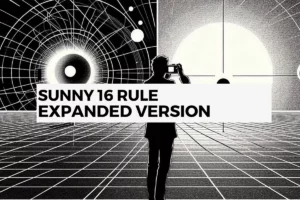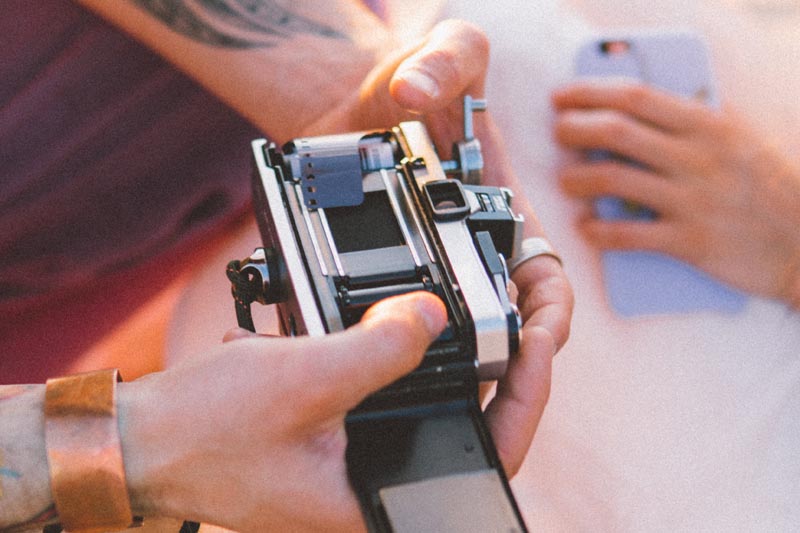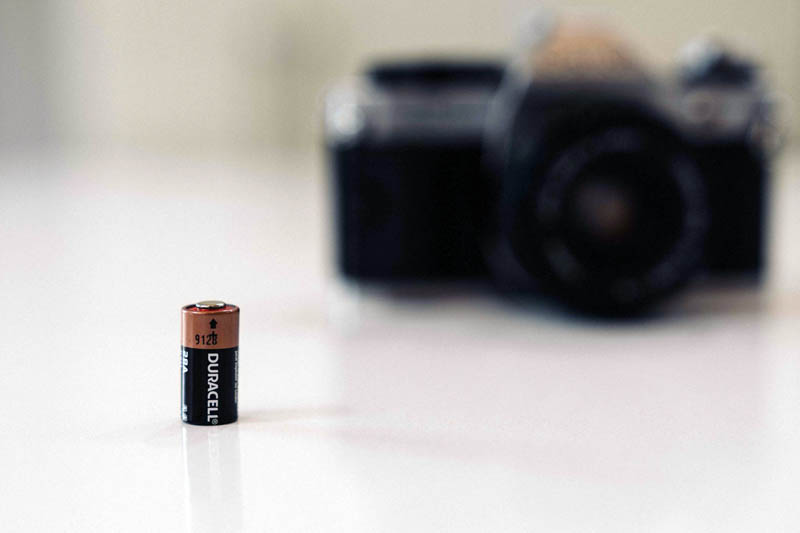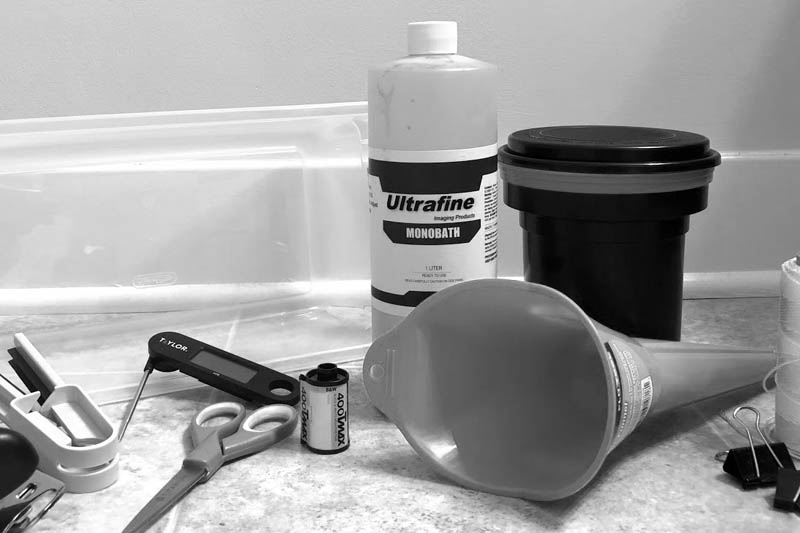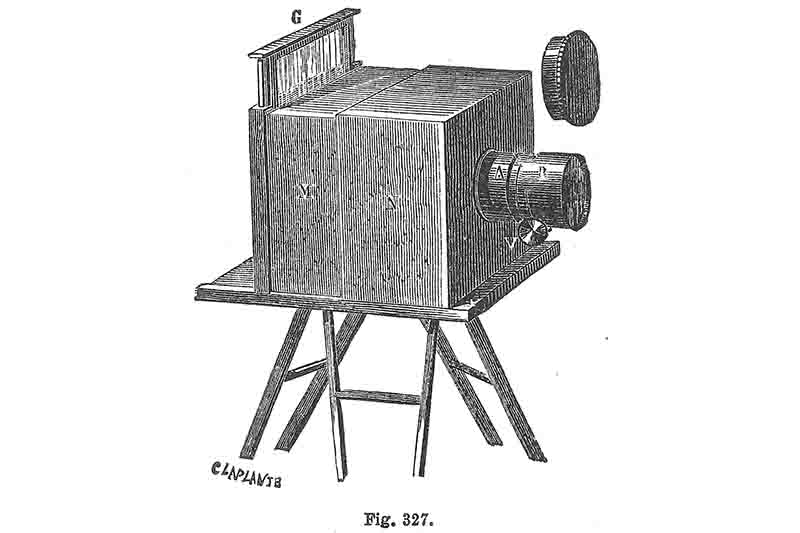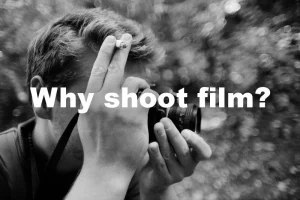Getting Started with Super 8 Cameras: All You Need to Know
Last Updated on June 11, 2023

Super 8 cameras have a timeless charm that continues to captivate filmmakers and enthusiasts alike. If you’re curious about diving into the world of Super 8 filmmaking, here we will tell you everything.
In this comprehensive guide, we’ll take you through the basics of Super 8 cameras, from the fundamental principles to the essential equipment and materials you’ll need to get started.

Whether you’re an experienced filmmaker or a beginner, this guide strives to be as clear and understandable as possible, catering to a wide range of readers.
Table of Contents
Overview
The Super 8 camera is a film camera that uses 8 mm wide, photosensitive film. It is commonly used in filmmaking and is known for its compact size and ease of use. Super 8 cameras have been widely used by amateurs and professionals alike for capturing footage since their inception.
Super 8 cameras have been around since 1965 when they were introduced by Eastman Kodak. These devices revolutionized the film industry by providing a more affordable and user-friendly option for shooting movies.
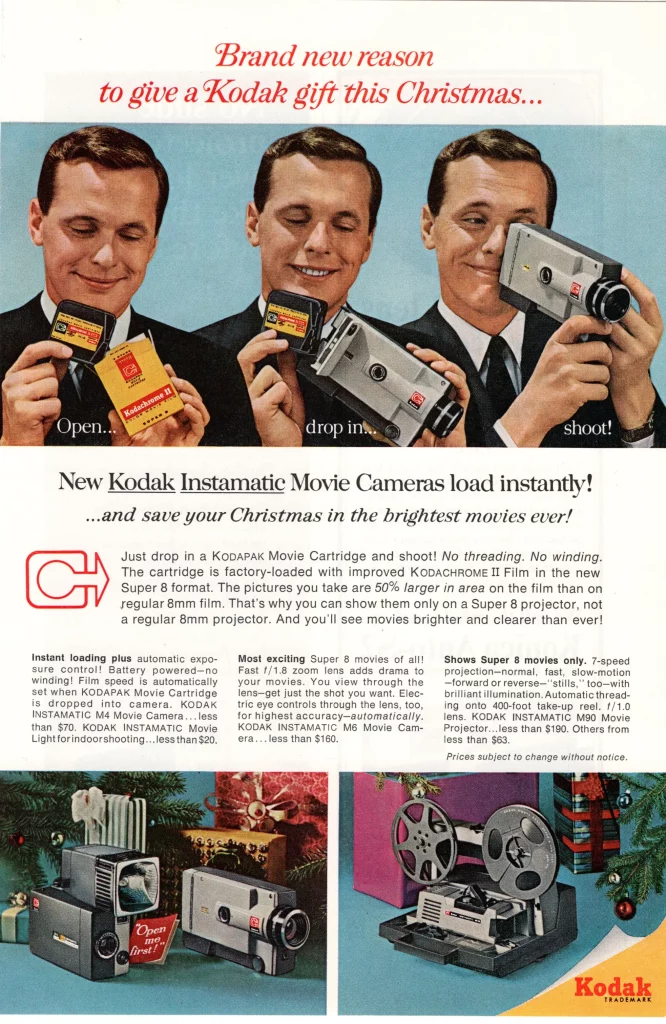
Importance of Super 8 Camera in Filmmaking
Super 8 cameras have played a significant role in the history of filmmaking. They have provided a platform for aspiring filmmakers to explore their creativity and express their ideas.
Over the years, Super 8 cameras have been widely used by amateurs and professionals alike due to their sufficient quality for capturing sharp images and enjoying a good home movie.
Super 8 filmmaking has a distinct aesthetic quality, characterized by its grainy texture and vintage look. Many filmmakers value the unique visual appeal of Super 8 and use it as a creative tool in their projects.
How Super 8 Cameras Work
Understanding the Basics of Super 8 Film
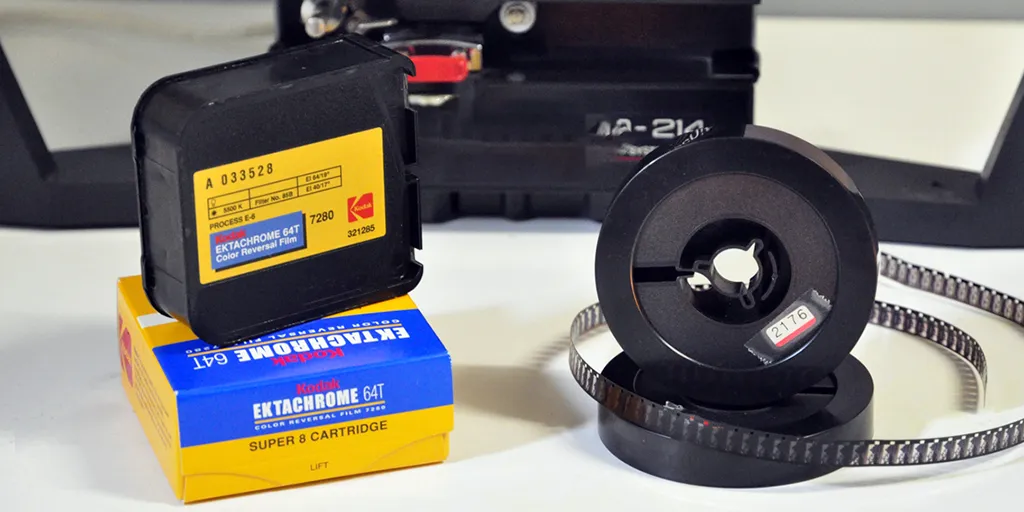
Super 8 film is a light-sensitive photographic film that is 8 mm wide. It is delivered in preloaded cartridges, which provide convenience and ease of use compared to other film formats.
Super 8 film is predominantly purchased online from specialized vendors. Amateurs often prefer using reversal film for their recordings. In modern times, Super 8 film is typically shot without live sound recording.
The Preloaded Cartridges
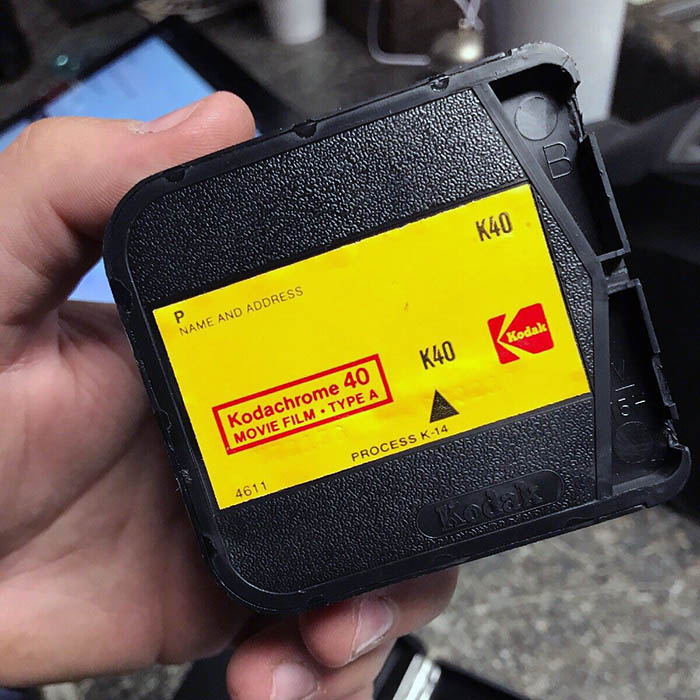
Super 8 film comes in preloaded cartridges, which can be easily inserted into the camera for filming. Each cartridge, with a capacity of 50 Feet, allows for approximately 3 ½ minutes of runtime at normal recording speed.
After exposure, the film cartridge is removed and sent to a lab for development. The developed film is then returned on a small 50ft reel, ready for projection. Alternatively, the film can be scanned and processed electronically for video projection and further editing.
Filming without Live Sound Recording
Unlike modern digital cameras, Super 8 cameras do not typically have the capability for live sound recording. Filmmakers using Super 8 often add sound to their films during the editing process or use other methods, such as syncing sound separately.
The focus of Super 8 filmmaking is primarily on capturing visually compelling footage.
Equipment for Super 8 Filmmaking
Finding Super 8 Cameras in the Market
Super 8 cameras are available in the market as used or refurbished equipment. Online platforms like eBay and second-hand stores offer a range of Super 8 camera models for purchase.
It’s important to research and select reputable sellers to ensure the quality and functionality of the camera.
Recommended Super 8 Camera Models

Several Super 8 camera models are recommended for their performance and features. Examples include Bauer Super 8 cameras (with some limitations in recognizing film sensitivity), Beaulieu film cameras (such as the 2008, 4008, 5008, 6008, 7008 series), Canon 310XL (a beginner-friendly camera), Nizo film cameras (including models like S56, S560, S800, 481, 561, 801), Leicina models, and Nikon R8 or R10.
These cameras vary in terms of film speeds, lens capabilities, and technical options, catering to the needs of different filmmakers.
Tips for Buying Used Super 8 Cameras
Evaluating the Physical Condition of the Camera
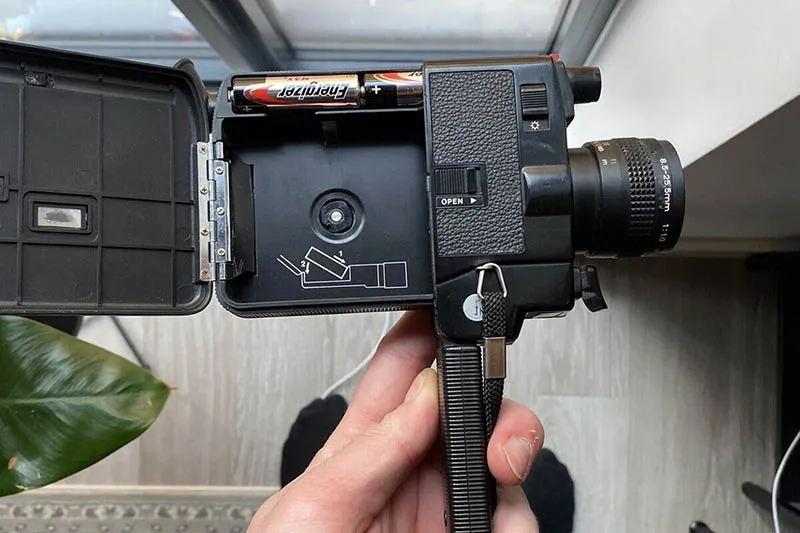
When purchasing a used Super 8 camera, it is essential to pay attention to its external condition. Cameras with scratches, dents, or signs of poor maintenance pose a high risk of being a poor purchase.
Look for cameras in good cosmetic condition, preferably with the original camera case and user manual. Additionally, check for any signs of corrosion, rust, loose parts, or mechanical damage.
Shaking the camera and testing its motor and exposure indicators can provide further insights into its functionality.
Checking Storage Conditions and Battery Compartments:
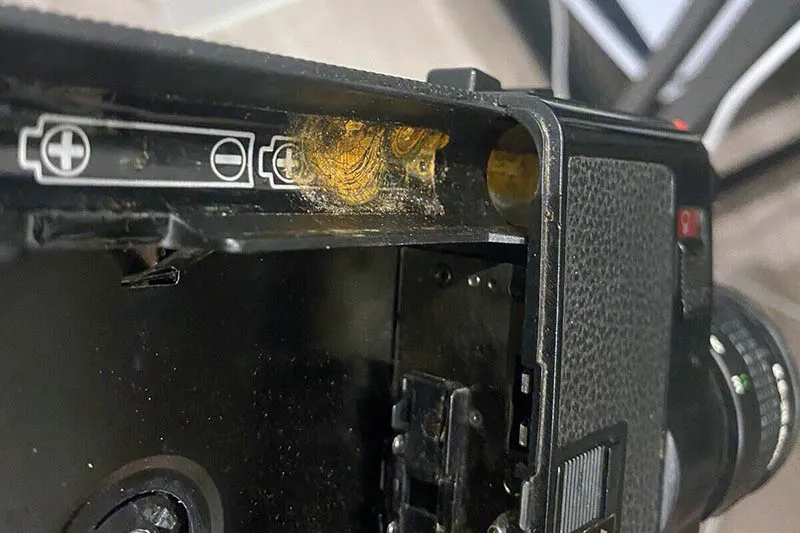
Before buying a used camera, it’s important to inquire about how it was stored. Cameras stored in damp or unfavorable conditions, such as attics, can suffer from moisture damage and corrosion.
Smelling the camera and inspecting the battery compartment for corrosion or rust traces is advisable. Some cameras may require specific batteries or modifications, so it’s essential to verify the compatibility and availability of suitable power sources.
Testing Camera Functionality:
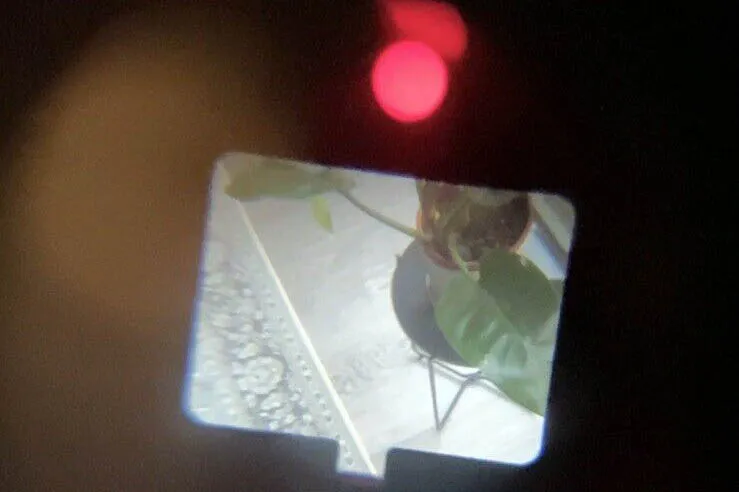
To ensure the functionality of a used Super 8 camera, it is recommended to insert batteries and test its operation. The camera should run smoothly and quietly at different speeds, and the exposure indicator should respond correctly to different lighting conditions.
The motorized zoom should be easily adjustable, and all the camera’s functions should work properly.
Cameras that do not function or exhibit strained operation may require repairs, which should be avoided, especially for beginners. If possible, shooting a test film can provide further assurance of the camera’s performance.
Super 8 Film Types and Options
Super 8 film comes in preloaded cartridges, as we mentioned, which are ready to be inserted into the camera. When using the recommended cameras, most of them automatically recognize the film’s sensitivity. However, with some cameras like the French Beaulieu cameras, the correct film sensitivity needs to be manually set.
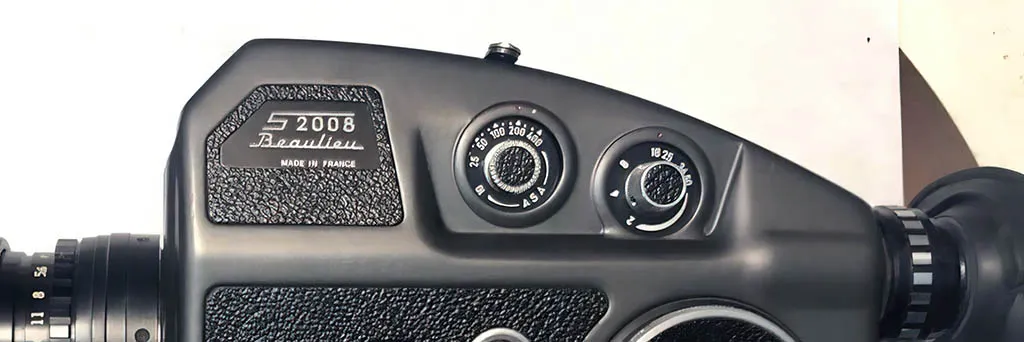
Film Sensitivity (ASA)
Film sensitivity is indicated by a numerical value in ASA (American Standards Association) units. Higher numbers represent higher sensitivity to light, requiring less light for proper exposure.
Here are some examples of renowned films and their most common uses:
- Kodak Tri-X (ASA 200): This film is known for its versatility and fine grain structure. It is suitable for a wide range of lighting conditions and is often used for general purpose shooting.
- Kodak Ektachrome (ASA 100): Ektachrome is a color reversal film known for its vibrant and saturated colors. It is often used for capturing vivid landscapes, events, and outdoor scenes.
- Kodak Vision3 500T (ASA 500): This film is designed for low-light conditions and offers excellent performance in challenging environments. It is commonly used for night or indoor shooting, where higher sensitivity is required.
- Fuji Velvia (ASA 50): Velvia is a slide film that produces rich and saturated colors with high contrast. It is often used for nature, landscape, and fine art photography, where vibrant colors are desired.
- Kodak Double-X (ASA 250): Double-X is a black and white film known for its classic, cinematic look. It has a medium-speed sensitivity and is often used for shooting in low light with a vintage aesthetic.
Filters
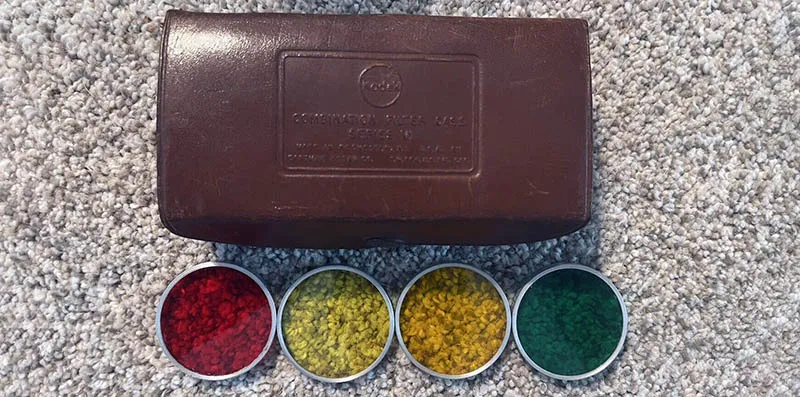
It is important to consider whether the film is designed for daylight or artificial light conditions. There is a distinction between daylight and tungsten (artificial light) films due to variations in color rendition.
Filters can be used to correct for different lighting conditions, allowing the use of daylight films in artificial light without color distortion. For example, for tungsten films like Kodak VISION3, you might be interested in using an orange filter on cloudy days to counteract the excessive blue color, and in black and white film (like Kodak Tri-X), orange also serves to enhance skin tones.
Available Film Varieties and Brands:
Several film varieties are available for Super 8 cameras. Some popular options include black and white reversal films from ADOX and Kodak (Tri-X), color negative film (Kodak VISION3) and forthcoming films from Ferrania (EU). These films offer different aesthetic qualities and are suitable for different shooting.
Kodak cartridges are the easiest to find:
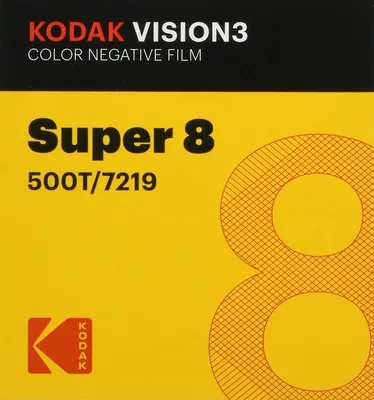
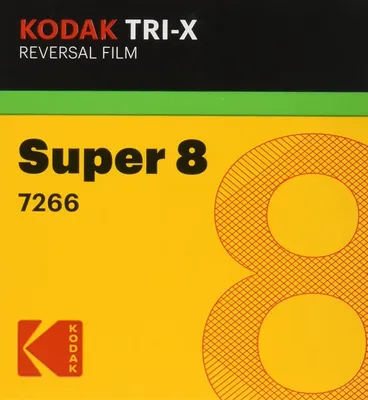
The Filming Process
Loading the Super 8 Cassette into the Camera
Looking ahead a bit and assuming you already have a camera and want to start shooting in Super 8, these would be the general steps. Below, we have provided a video that illustrates the process.
- Find a dark room: Look for a room with no direct light to avoid exposing the film before loading it into the camera.
- Open the camera: Locate the film compartment and open it following your specific camera model’s instructions.
- Remove the empty cartridge: Carefully take out any empty cartridge in the compartment.
- Insert the new cartridge: Take the new Super 8 film cartridge and place it in the camera compartment, ensuring it fits properly.
- Feed the film: Follow your camera’s instructions to feed the film correctly. This may involve threading the film end through the guides and ensuring it properly engages with the advancement mechanism.
- Close the film compartment: Make sure the film compartment is closed and secured properly to prevent unwanted light from entering.
Film Development Process
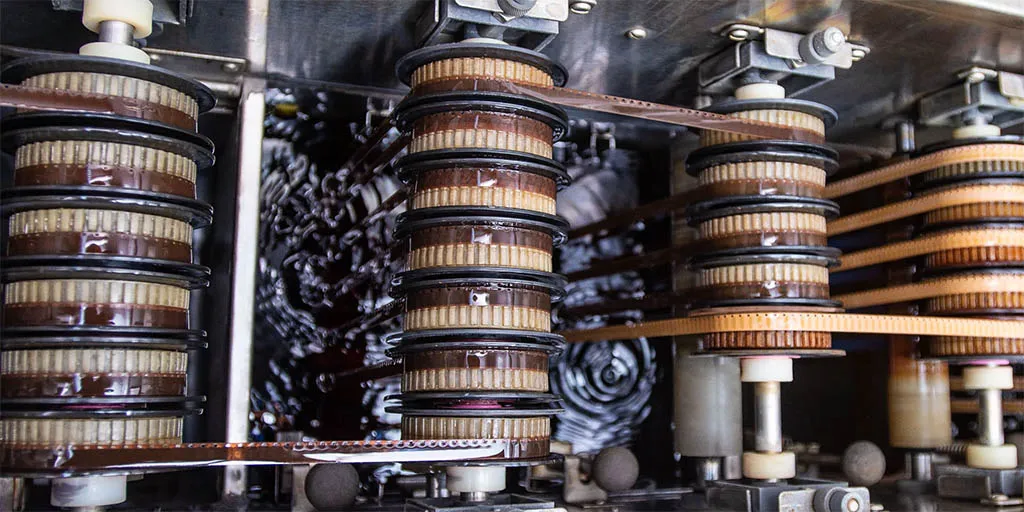
The film development process for Super 8 cameras involves a series of steps to transform the exposed film into a projection-ready format.
One option for film development is to send the exposed Super 8 film to a professional lab. These labs specialize in processing and developing the film using industry-standard techniques.
DIY Chemical Film Development
Another option for developing Super 8 film is to undertake the process yourself using DIY chemical development techniques.
This approach requires some practice and expertise but can be a rewarding experience for enthusiasts. It involves using chemicals and equipment to develop the film and prepare it for projection or digital conversion.
Watch this video to get an idea of how it’s possible to develop 8mm film yourself, but of course, it’s a completely different world from learning to use a super 8 camera.
Projecting Super 8 Films
To project Super 8 films, a film projector is used. The projector plays the film by passing it through a light source and projecting the images onto a surface, such as a screen or a wall. The film is threaded through the projector, and the projected images can be viewed in real-time.
The choice of projection surface can affect the overall viewing experience, and factors such as screen size, surface quality, and ambient lighting should be considered to achieve the desired projection quality.
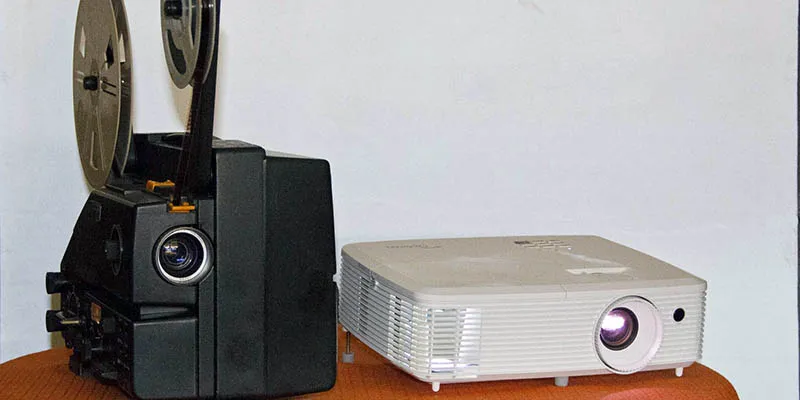
Of course, depending on whether it has been digitized or not, you can project your film in different ways. And if the projection experience is not your thing (we value it as “part of the Super 8 experience” here), you still have modern digital projectors, as well as, of course, sharing your video files on YouTube, Vimeo, or social media platforms as ways to showcase your projects.
Editing and Manipulating Super 8 Films
Splicing and editing multiple film reels is a process in Super 8 filmmaking where different film reels are joined together to create a cohesive sequence.
This technique allows filmmakers to combine different shots, scenes, or even different films to create their desired narrative or visual effect.
Mechanical Equipment for Editing
Mechanical equipment such as editing tables, splicers, and tape or glue systems are used in the editing process of Super 8 films.
These tools assist in physically cutting and joining film strips, ensuring smooth transitions and precise editing. Filmmakers rely on these mechanical devices to bring their vision to life during the editing phase.
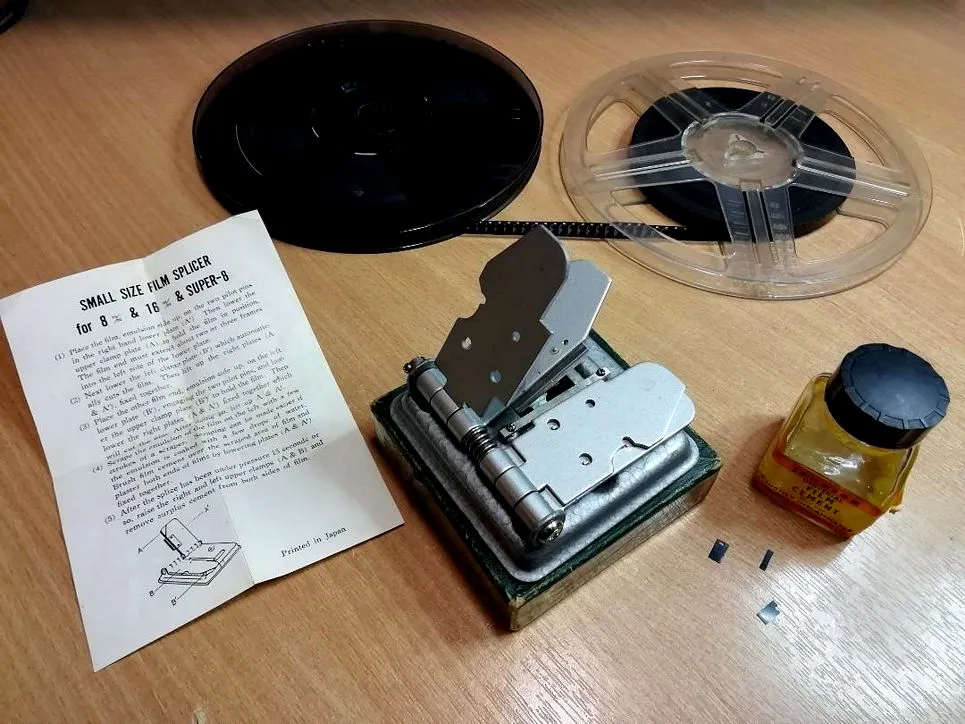
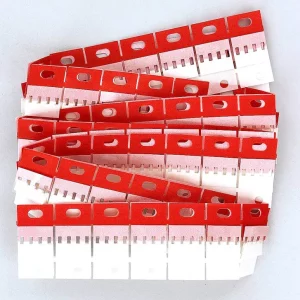
You can use the classic 8mm film splicers that are available second-hand or new in different online places (such as eBay), or you can be more “organic” and use simple scissors along with film splice tape, which is also not difficult to find. And if you want to experiment with other adhesives, you are free to do so.
Adjusting Scenes and Sequence Order
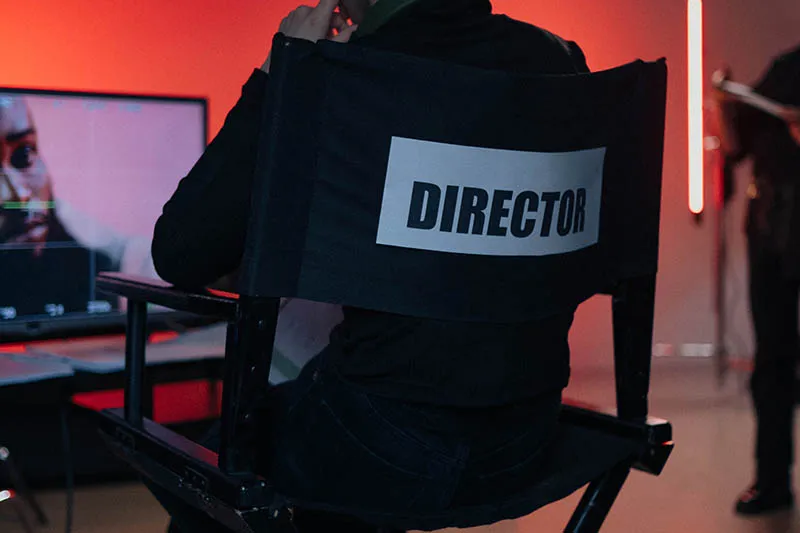
Adjusting scenes and sequence order is a crucial aspect of editing Super 8 films. Filmmakers have the flexibility to rearrange the order of scenes to create a desired storytelling flow or to experiment with different narrative structures.
This process involves reordering the film strips or frames to achieve the desired sequence. And depending on how involved you are with your project, this can be the most important step of everything done previously.
Digitizing 8mm film
It involves sending your 8mm film to a specialized lab (which can be the same one you sent it to for development). They have the necessary equipment and expertise to handle the film and produce high-quality digital copies.
The process typically includes cleaning the film, scanning it frame by frame using professional-grade scanners, and performing color corrections and restorations if necessary. This option ensures optimal results but may involve additional costs and longer turnaround times.
DIY Scanning with an 8mm Film Scanner
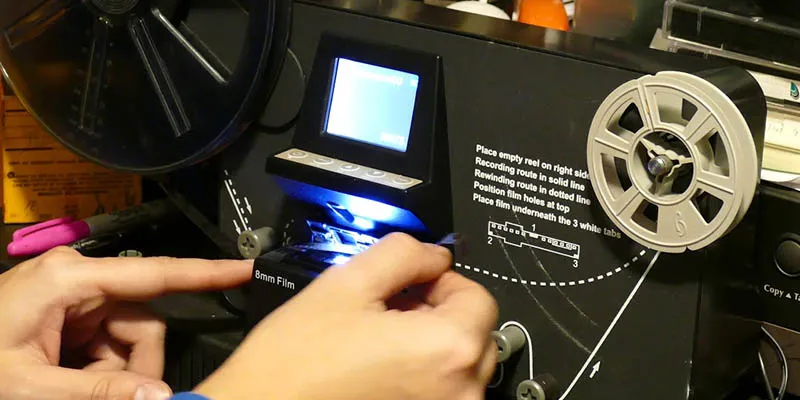
Alternatively, you can choose to digitize your 8mm film at home using an 8mm film scanner that you can purchase from platforms like Amazon. These scanners are designed to handle 8mm film formats and often come with software for capturing and saving digital images.
The process involves loading your film into the scanner, which then captures each frame and converts it into a digital file (such as mp4 or mov).
DIY scanning offers convenience and control over the process, allowing you to work at your own pace. However, the quality of the digital output may vary compared to that of a professional lab. Even when using the same equipment, experience plays a significant role in achieving optimal results.
Some scanner options for super 8 would be:
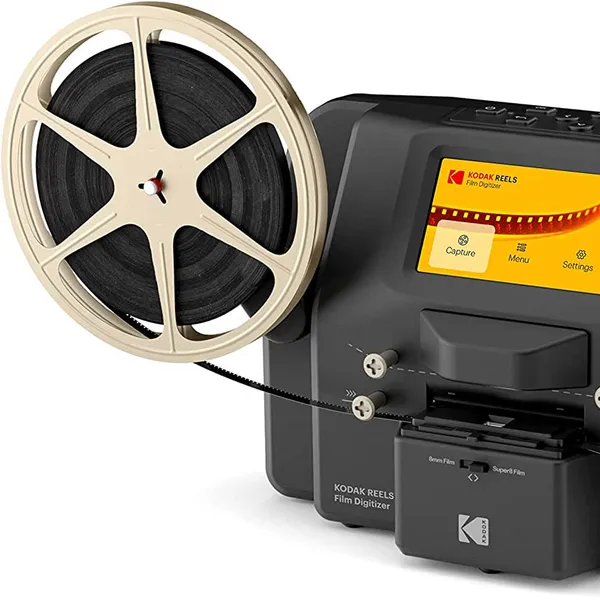
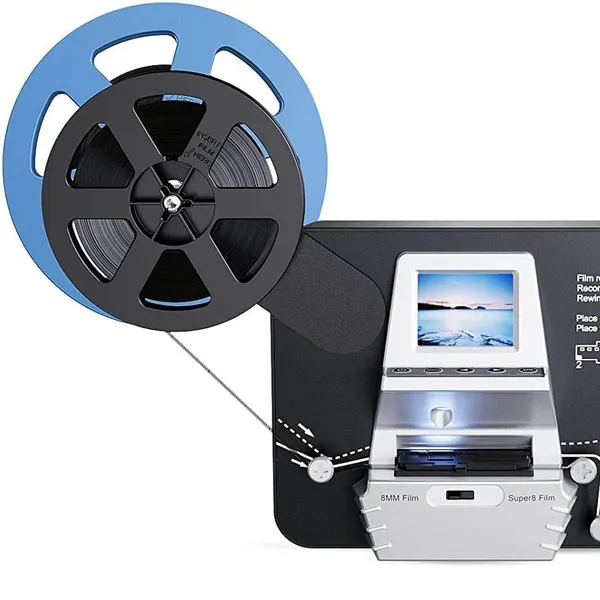
DIY with a DIY film scanner?
If you are skilled in robotics projects and want to challenge yourself by creating your own scanner with a digital camera, you can check out this geeky project that explores this possibility.
FAQs
What are the differences between 8mm film and super 8?
The 8mm and Super 8 film formats differ in terms of film width and perforations. Super 8 has a width of 8.8 mm compared to the standard 8 mm of regular 8mm film. The perforations on Super 8 are smaller and closer to the center of the film.
What resolution is Super 8 Camera?
It’s important to note that Super 8 is an analog film format, so it does not have a specific resolution per se (until film it is digitized, of course). The “resolution” of a Super 8 camera will depend on various factors, such as the film stock used, the quality of the camera lens, and most importantly, the type of scanner used for film digitization. Other factors involved in image quality include lighting conditions, film processing, and film grain.
Is shooting Super 8 expensive?
Shooting Super 8 can be more expensive compared to digital formats due to various factors. Firstly, the cost of Super 8 film itself, including the purchase price and processing fees, can add up quickly. Additionally, Super 8 cameras may require specific batteries and accessories, which can contribute to the overall cost. Moreover, the limited recording time of Super 8 cartridges (3 ½ minutes) may require you to purchase multiple cartridges for extended shoots.
Can you play 8mm on Super 8 projector?
No, you cannot play 8mm film on a Super 8 projector. The film formats are not compatible with each other due to differences in perforation size, film width, and cartridge design. 8mm projectors are specifically designed to handle 8mm film, while Super 8 projectors are designed for Super 8 film. Attempting to play 8mm film on a Super 8 projector can result in damage to both the film and the projector.
Conclusion
Super 8 cameras have maintained their appeal despite technological advancements in digital filmmaking. Their unique aesthetic, nostalgic charm, and the tactile nature of working with physical film continue to attract filmmakers and artists. The simplicity and accessibility of Super 8 cameras make them an attractive choice for both beginners and experienced filmmakers.
Super 8 filmmaking has become more than just a medium; it represents a craft that enthusiasts strive to preserve. The hands-on process of shooting and developing Super 8 films allows for a deeper connection to the art form. By embracing Super 8, filmmakers contribute to the preservation of analog filmmaking techniques and help keep this creative tradition alive.



